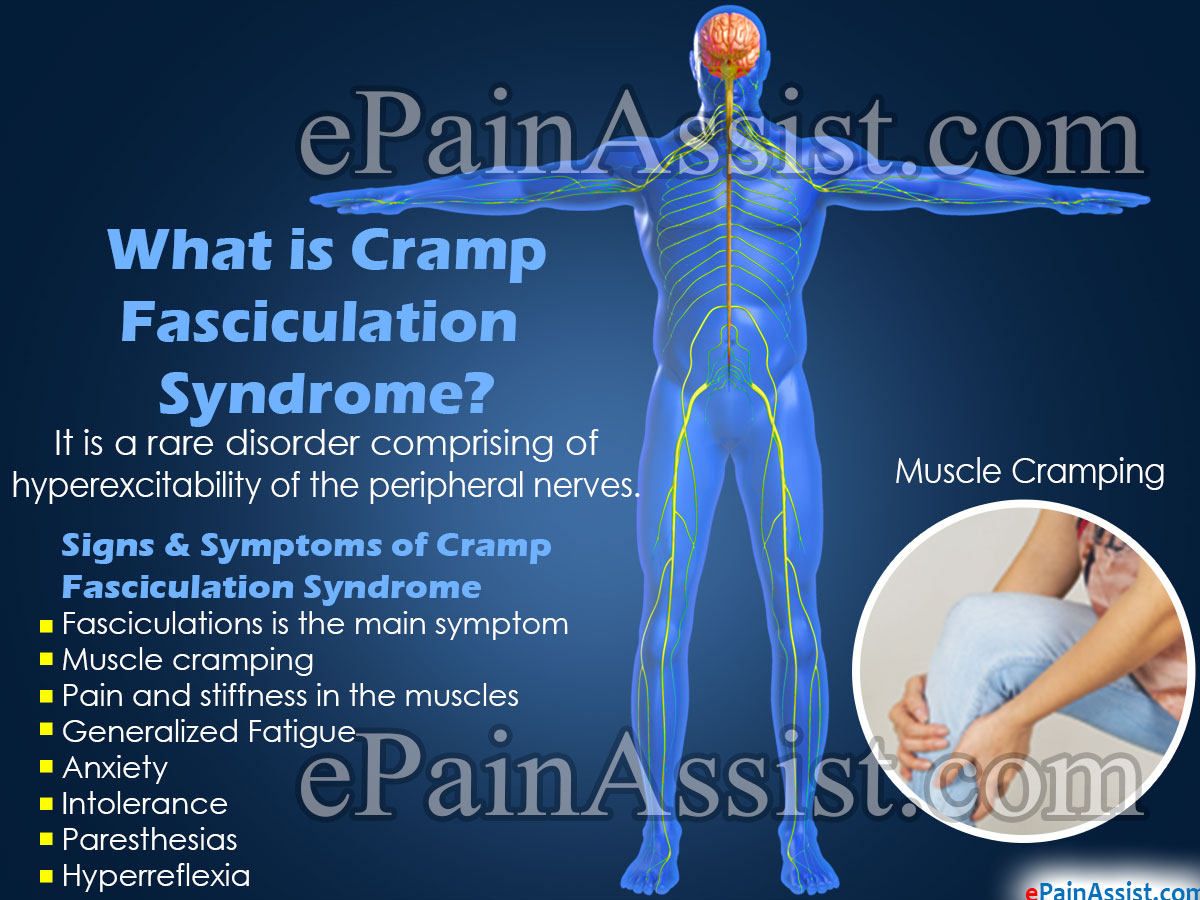What Is Cramp Fasciculation Syndrome?
Cramp fasciculation syndrome is a rare disorder comprising of hyperexcitability of the peripheral nerves.1 It is a more severe condition than benign fasciculation syndrome, which is a related disorder and is more common than Cramp Fasciculation Syndrome. In this condition, patient experiences fasciculations, pain, cramps, muscle stiffness, fatigue, and all the conditions which can also be seen in another related condition known as neuromyotonia. Patients suffering from Cramp fasciculation syndrome can also have paresthesias just like those patients who are suffering from neuromyotonia. Majority of the cases of cramp fasciculation syndrome have no known cause, i.e. they are idiopathic.

Clinical examination and electromyography (EMG) helps in confirming the diagnosis of cramp fasciculation syndrome.2 EMG helps in detecting only one abnormality which is fasciculation. Cramp fasciculation syndrome is a chronic condition and treatment comprises of anti-seizure medications including carbamazepine, plasmapheresis, immunosuppressive drugs and stress reducing techniques.
Signs & Symptoms of Cramp Fasciculation Syndrome
The symptoms of Cramp fasciculation syndrome greatly resemble the symptoms of Benign Fasciculation Syndrome and they include:
- Fasciculations is the main symptom.
- Muscle cramping is also another primary symptom of Cramp fasciculation syndrome.
- Pain and stiffness in the muscles.
- Patient experiences generalized fatigue.
- Patient experiences anxiety.
- There is exercise intolerance.
- Paresthesias.
- There is also hyperreflexia.
Investigations for Cramp Fasciculation Syndrome
The diagnosis procedure for Cramp Fasciculation Syndrome (CFS) is closely related to the diagnosis procedure of Benign Fasciculation Syndrome (BFS). The difference in diagnosis of both the conditions is that Cramp fasciculation syndrome is commonly associated with prominent and more severe pain, stiffness and cramps. Clinical examination and electromyography (EMG) help in confirmation of the diagnosis.
Treatment of Cramp Fasciculation Syndrome
- Treatment for Cramp fasciculation syndrome is also similar to the treatment for benign fasciculation syndrome.
- Till now, there have been no medicines, supplements, or any other form of treatment, which have been effective in completely controlling the symptoms of Cramp fasciculation syndrome.
- In patients where fasciculations occur as a result of magnesium deficiency, then magnesium supplements help in decreasing the symptoms.
- Moderate reduction in the symptoms of Cramp fasciculation syndrome can be achieved with carbamazepine therapy.
- Fasciculations can be controlled to some extent using medications, which are also used for treating essential tremor, such as anti-seizure drugs and beta-blockers.
- The patient feels better if the treatment is also done for any associated anxiety.
- In many patients, the intensity of Cramp fasciculation syndrome symptoms can be greatly reduced by cutting down on the daily overall stress. Some of the methods through which the stress can be reduced include: Sleeping, exercising, relaxing, meditation, and eliminating dietary caffeine, such as coffee, cola, chocolate and some over-the counter medications.
- Over-the-counter pain medications, such as acetaminophen and ibuprofen, help if the patient also has muscle aches or pain along with the fasciculations. Patient can take these medicines at the time when the pain is more. There are other types of pain management, which can also be utilized.
- Before taking any over-the-counter medications to treat Cramp fasciculation syndrome, patients should consult with their doctor to avoid any adverse affects in case of any long-term usage of those medicines or any other preexisting medical conditions.
Also Read:
